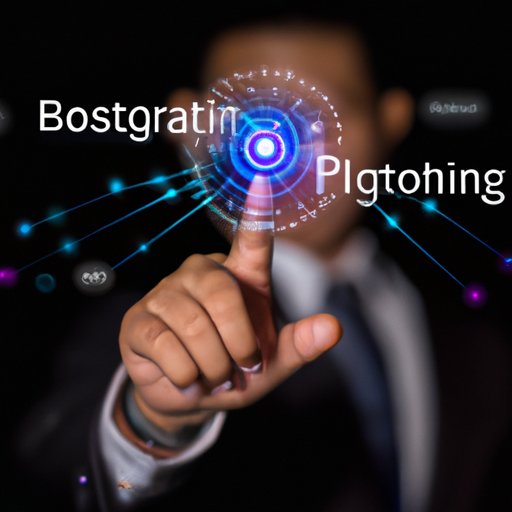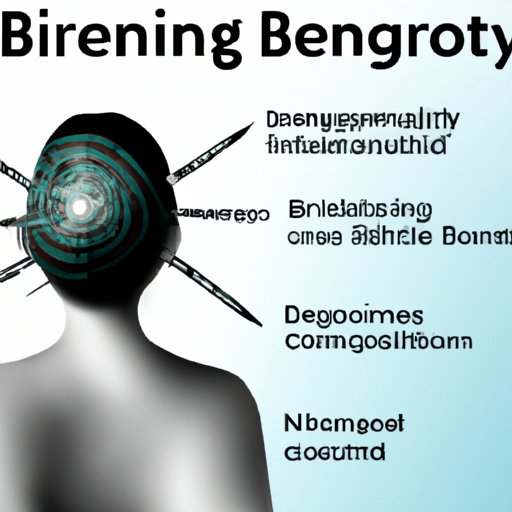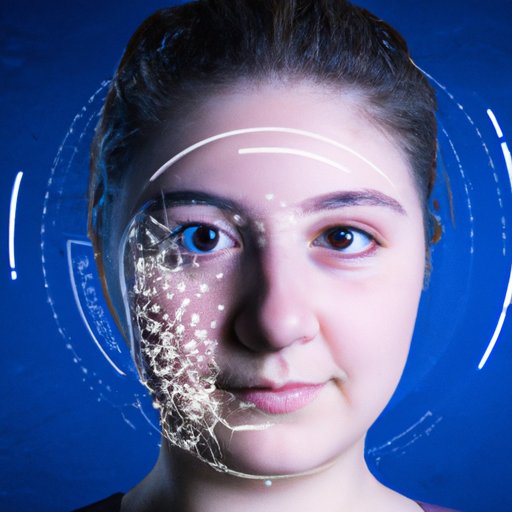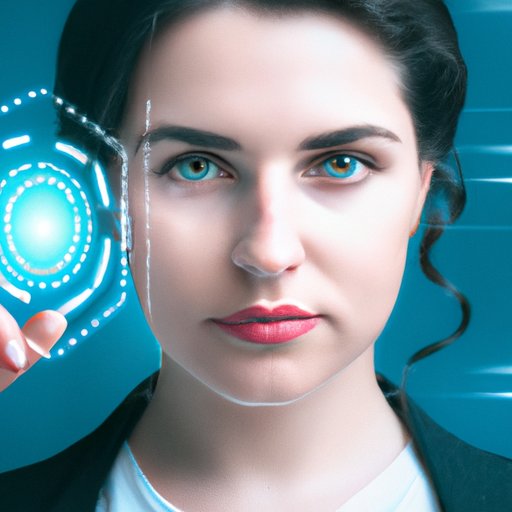Introduction
Biometric technology is a type of technology that uses individuals’ physical or behavioral characteristics to identify them. It has become increasingly popular in recent years due to its ability to provide enhanced security, accuracy, and convenience. In this article, we will explore the basics of biometric technology, different types, how it is used in business and government applications, benefits and drawbacks, and its potential future.
Explaining the Basics of Biometric Technology
Biometric technology is a form of identification system that uses an individual’s unique biological features to verify their identity. These features can include fingerprints, facial features, voice patterns, iris patterns, and even hand geometry. Biometric technology is often used as a more secure and reliable way of verifying a person’s identity than traditional methods such as passwords or PIN numbers.
Biometric technology works by first capturing an image of the individual’s biological feature, such as their fingerprint. This image is then compared to a database of previously stored images to determine if there is a match. If there is a match, the individual is verified as being who they claim to be.
Some examples of biometric technologies include fingerprint scanning, facial recognition, voice recognition, iris recognition, and hand geometry. Each of these technologies capture and store images of the individual’s biological feature in order to verify their identity.
Examining Different Types of Biometric Technology
Fingerprint scanning is one of the most widely used biometric technologies. It works by capturing an image of the individual’s fingerprint and comparing it to a database of previously stored images. Fingerprint scanning is highly accurate and is often used in law enforcement, banking, and other security-related applications.
Facial recognition is another popular biometric technology. It works by capturing an image of the individual’s face and comparing it to a database of previously stored images. Facial recognition is often used in security and surveillance applications, such as in airports and other public places.
Voice recognition is a biometric technology that captures an individual’s voice and compares it to a database of previously stored voices. Voice recognition is often used in telephone banking applications and other customer service applications.
Iris recognition is a biometric technology that captures an image of the individual’s iris and compares it to a database of previously stored images. Iris recognition is highly accurate and is often used in security and surveillance applications.
Hand geometry is a biometric technology that captures an image of the individual’s hand and compares it to a database of previously stored images. Hand geometry is often used in access control applications, such as door locks and time clocks.

How Biometric Technology is Used in Business and Government Applications
Biometric technology is used in a variety of business and government applications. It is often used for security purposes, such as in banks and other financial institutions. It is also used to track employee attendance and access control, such as in office buildings. Additionally, biometric technology is used in law enforcement and immigration applications.

The Benefits and Drawbacks of Biometric Technology
Biometric technology offers a number of advantages. It is highly accurate and secure, making it difficult for someone to gain access to restricted areas or information. It is also convenient, as it eliminates the need for individuals to remember passwords or PIN numbers. Additionally, biometric technology is cost-effective, as it eliminates the need for purchasing and maintaining hardware or software systems.
However, biometric technology also has some drawbacks. For example, it can be intrusive and uncomfortable for some people, as it requires them to submit to scans or recordings of their biological features. Additionally, biometric data can be vulnerable to hacking, as it is stored in databases that can be accessed by unauthorized persons. Finally, biometric technology can be expensive to implement and maintain.

The Future of Biometric Technology
Biometric technology is constantly evolving and advancing. Emerging technologies such as 3D facial recognition, vein recognition, and palm vein recognition are becoming increasingly popular. These technologies offer enhanced security and accuracy, and are being used in a variety of applications, including access control, banking, and law enforcement.
In addition, biometric technology is being explored for potential applications in healthcare, retail, and transportation. For example, biometric technology could be used to monitor patients’ vital signs in hospitals, track customer loyalty in retail stores, and verify drivers’ identities in autonomous vehicles.
Conclusion
Biometric technology is a form of identification system that uses an individual’s unique biological features to verify their identity. It is used in a variety of business and government applications, including security, attendance tracking, and access control. Biometric technology offers a number of advantages, such as increased security and accuracy, but also has some drawbacks. Emerging technologies such as 3D facial recognition, vein recognition, and palm vein recognition are becoming increasingly popular, and biometric technology is being explored for potential applications in healthcare, retail, and transportation.
(Note: Is this article not meeting your expectations? Do you have knowledge or insights to share? Unlock new opportunities and expand your reach by joining our authors team. Click Registration to join us and share your expertise with our readers.)
